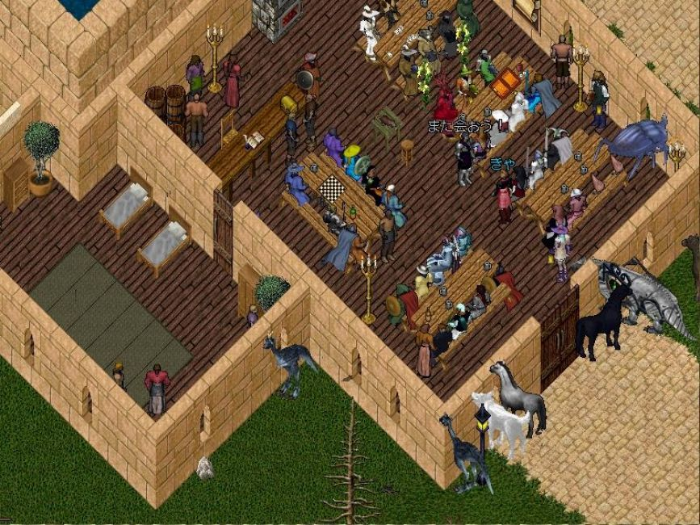There are so many good books about gaming and its history out there these days, it's easy to become overwhelmed. This sounds like a good read, though, and maybe I'll get around to checking it out someday.
Dungeons & Dreamers: A Story of How Computer Games Created a Global Community Review
|
|
See PixlBit's Review Policies

On 03/28/2014 at 01:30 PM by Travis Hawks We wouldn’t be here without all of you. |

For anyone interested in the medium’s history and is looking for more than a dull chronology.
We throw around the word “community” in the video games arena without a second thought. Even small enthusiast sites have community managers and a myriad of other ways to strengthen and connect people who are passionate about games. If it weren’t for several key creatives that helped form the gaming landscape through the decades, though, we might not have the communities we all take for granted. Dungeons & Dreamers’ updated second edition guides us on a journey that shows how communities became so important to gaming. It’s an intriguing thesis that is hammered home with a continuous chain of examples that make it undeniable how integral community has always been to video games.
Dungeons & Dreamers’ traipses across the early mainframe days, through the Ziploc-baggie Apple ][ era, and all the way down Quake’s corridors to The Sims Online. Each stop along the way focuses on the personalities who made historic games and on key people who expanded them into bigger experiences than just what was on-screen. Not only are there some great facts about the creation of pivotal games like Doom in Dungeons & Dreamers, but there are emotional stories about what these games meant to people. Each tale comes back to how important the social component of gaming has always been.
In fact, the ubiquity and acceptance of video gaming’s social aspects made me lose sight of the book’s thesis somewhere in the middle. The descriptions of events and games, spotlighting some of the people that make and play them, made me feel like I was just reading about games in general. This is no fault of the authors, though, but rather my mistake for getting caught up in the stories and forgetting that the communities being highlighted are something I just consider part of gaming. It only cemented the thesis further once I snapped out of it.
Even while I was missing the point of it all, the way that Brad King and John Borland relay stories of famous game developers and community organizers kept me hooked. Hearing more details about Richard Garriott and John Carmack in a fashion and focus I’d not yet read was fascinating, even outside of the community angle. Reading the torment of Garriott dealing with his fellow team members and publishers made me really feel for the trials that went into the Ultima games – a series that laid so much groundwork for designers today. Stories of professional gamers learning how to improve their game and relate to others at tournaments made me appreciate what dedication and skill they have – and that the fans that follow them have every right to worship their abilities.
Even though the book picks key figures to focus on, it makes it clear that the importance of people interacting in and around video games is universal. The great thing about Dungeons & Dreamers is that it makes the trip through all of the examples a joyful experience. This is no dry timeline of gaming’s biggest moments, but rather a delicious cross-section leveraged perfectly to hit home its important theme. The only question is what new stories will crop up in the next few years that will work their way into the third edition.










Comments